Here's How to Set a Beautiful Table
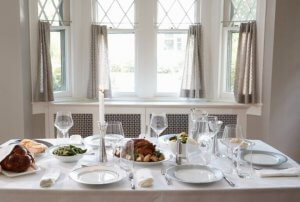
Who said that setting a beautiful table is complicated? Try using the best fabrics and different decorative options and you’ll get a perfect result.
Of course, you already have a thousand and one tips on how to set your table when you’re having a special dinner with your partner, family, or friends. On those occasions, you begin to conjure up ideas and think about the tablecloth, the napkins, the people, etc.
Luckily, setting a table correctly is simpler than you would expect. Think about whether you would like something practical or something more decorative. It all depends on the style of the table and its shape and function. Also, the location of the table is very important.
Tips and options for setting the table
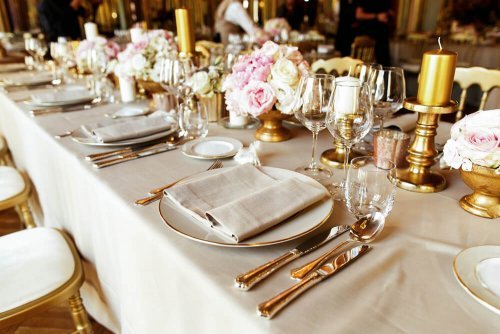
Do you know how to get the best combination when you set your table? Let’s take it one step at a time.
The table linen
A tablecloth doesn’t have to be just for a dining room table. It can be used to create a style for any type of table. Instead of formal, the table may be round or square, large or small, formal or informal.
Besides the protective function that a tablecloth has, it can also add color, design, and texture. Table linen that is plain and made of cotton is the most practical and works with any type of decor.
If you prefer printed fabrics, we recommend coordinating them with the style of the room where you have the table. For example, informal cotton checked cloth will add a rustic touch.
If you don’t mind spending time ironing and starching use linen fabric in white or cream to give a touch of elegance.
Set an attractive table with placemats
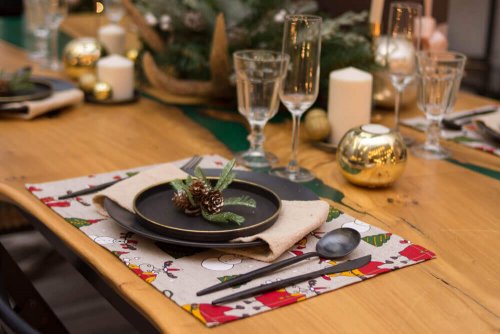
If you don’t want to cover the entire table, an alternative is placemats. These are rectangular-shaped and the right size for a place setting. (plates, flatware, and glassware)
Additionally, another practical and elegant option is a table runner. This is a long narrow strip of fabric that is placed along the center of the table.
Napkins
Traditionally, these were made of cotton fabric. But, for more formal occasions, the preference is starched linen.
Today’s trends are to have napkins in artistic shapes. It’s also acceptable to place them in traditional tubular or rectangular shapes.
Take measurements to set a table
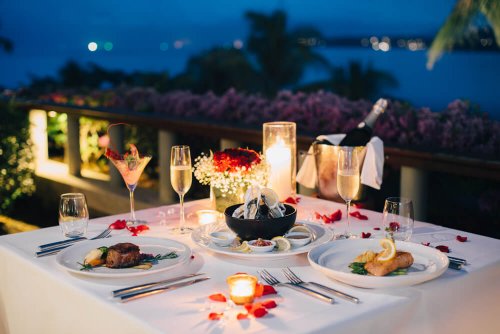
To calculate the size of the tablecloth, you’ll need the dimensions of the table’s surface and the length of overhang. Whether the shape is round, square, rectangular, etc, always add one inch for the hem.
Square tablecloth
To fit a square tablecloth on a square table, measure the width of the table and add two times the required overhang. To determine the overhang, you’ll have to measure from the corner of the tabletop to the top of the chair seat.
Rectangular shape
To calculate the fabric size for this shape, measure the length and add two times the length of the overhang. We recommend that you have an overhang of 12 inches at the most. Continue calculating the same way with the width.
Because of the dimensions of the table, you may not be able to use just one piece of fabric. You’ll need a central section and two side panels. And in the case of printed material, you should match the prints at the seams.
Round tablecloth
This type of tablecloth, especially if it reaches the floor, tends to take a lot of fabric. Because of this, you’ll need to sew together several widths. But be very careful not to end up with a seam in the middle of the table.
So that you have an overhang of equal length around the perimeter, one of the panels must be in the shape of an arc. Cut the cloth carefully, to end up with a tablecloth that’s as large as it can be.
Napkins
Square napkins are the most common. They tend to be either 12 or 24 inches square. This excludes cocktail napkins which are smaller and measure 4 or 6 inches square.
When cutting the fabric for napkins, you have to leave at least 3/4 inch around the edges for a double hem. Or for a better finish, decorate the edges with zigzag stitch. What’s more, you can decorate them with ribbon or fray them at the edge to make fringes.
Other suggestions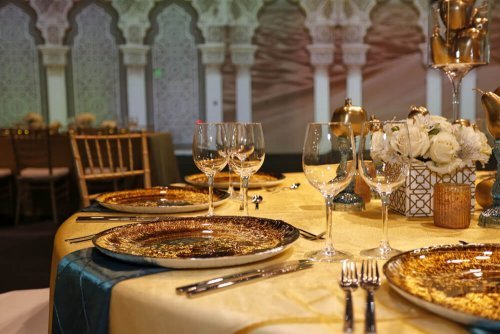
To give a personal touch to the linen, you can add other decorative elements. For example, you could cover the table with heavy material such as damask and you can stylize it by making pleats.
Another idea is to add embroidery or piping around the border of the tablecloth. To do this, you can use tassels, garlands, or satin. To add more volume, you can use two tablecloths that reach the floor; one across the width and the other across the length of the table.
Here’s an idea for a rectangular shape. Place runners that cover the table for every two guests that cover the entire surface. If you want to use contrasting colors, you’ll get a good decorative effect.
So, choose a good quality fabric that you like and let your imagination carry you away!
Who said that setting a beautiful table is complicated? Try using the best fabrics and different decorative options and you’ll get a perfect result.
Of course, you already have a thousand and one tips on how to set your table when you’re having a special dinner with your partner, family, or friends. On those occasions, you begin to conjure up ideas and think about the tablecloth, the napkins, the people, etc.
Luckily, setting a table correctly is simpler than you would expect. Think about whether you would like something practical or something more decorative. It all depends on the style of the table and its shape and function. Also, the location of the table is very important.
Tips and options for setting the table

Do you know how to get the best combination when you set your table? Let’s take it one step at a time.
The table linen
A tablecloth doesn’t have to be just for a dining room table. It can be used to create a style for any type of table. Instead of formal, the table may be round or square, large or small, formal or informal.
Besides the protective function that a tablecloth has, it can also add color, design, and texture. Table linen that is plain and made of cotton is the most practical and works with any type of decor.
If you prefer printed fabrics, we recommend coordinating them with the style of the room where you have the table. For example, informal cotton checked cloth will add a rustic touch.
If you don’t mind spending time ironing and starching use linen fabric in white or cream to give a touch of elegance.
Set an attractive table with placemats

If you don’t want to cover the entire table, an alternative is placemats. These are rectangular-shaped and the right size for a place setting. (plates, flatware, and glassware)
Additionally, another practical and elegant option is a table runner. This is a long narrow strip of fabric that is placed along the center of the table.
Napkins
Traditionally, these were made of cotton fabric. But, for more formal occasions, the preference is starched linen.
Today’s trends are to have napkins in artistic shapes. It’s also acceptable to place them in traditional tubular or rectangular shapes.
Take measurements to set a table

To calculate the size of the tablecloth, you’ll need the dimensions of the table’s surface and the length of overhang. Whether the shape is round, square, rectangular, etc, always add one inch for the hem.
Square tablecloth
To fit a square tablecloth on a square table, measure the width of the table and add two times the required overhang. To determine the overhang, you’ll have to measure from the corner of the tabletop to the top of the chair seat.
Rectangular shape
To calculate the fabric size for this shape, measure the length and add two times the length of the overhang. We recommend that you have an overhang of 12 inches at the most. Continue calculating the same way with the width.
Because of the dimensions of the table, you may not be able to use just one piece of fabric. You’ll need a central section and two side panels. And in the case of printed material, you should match the prints at the seams.
Round tablecloth
This type of tablecloth, especially if it reaches the floor, tends to take a lot of fabric. Because of this, you’ll need to sew together several widths. But be very careful not to end up with a seam in the middle of the table.
So that you have an overhang of equal length around the perimeter, one of the panels must be in the shape of an arc. Cut the cloth carefully, to end up with a tablecloth that’s as large as it can be.
Napkins
Square napkins are the most common. They tend to be either 12 or 24 inches square. This excludes cocktail napkins which are smaller and measure 4 or 6 inches square.
When cutting the fabric for napkins, you have to leave at least 3/4 inch around the edges for a double hem. Or for a better finish, decorate the edges with zigzag stitch. What’s more, you can decorate them with ribbon or fray them at the edge to make fringes.
Other suggestions
To give a personal touch to the linen, you can add other decorative elements. For example, you could cover the table with heavy material such as damask and you can stylize it by making pleats.
Another idea is to add embroidery or piping around the border of the tablecloth. To do this, you can use tassels, garlands, or satin. To add more volume, you can use two tablecloths that reach the floor; one across the width and the other across the length of the table.
Here’s an idea for a rectangular shape. Place runners that cover the table for every two guests that cover the entire surface. If you want to use contrasting colors, you’ll get a good decorative effect.
So, choose a good quality fabric that you like and let your imagination carry you away!







